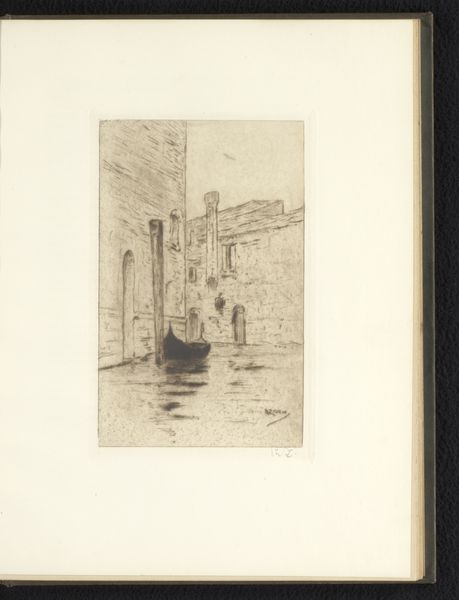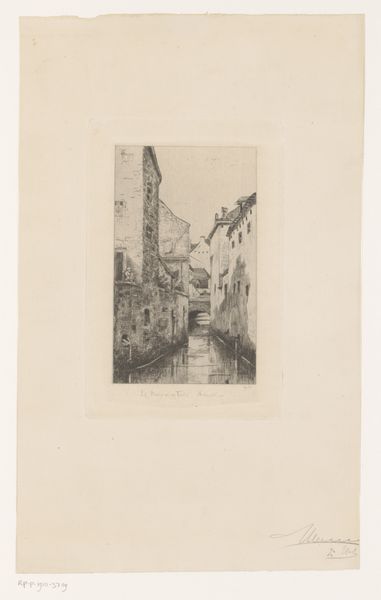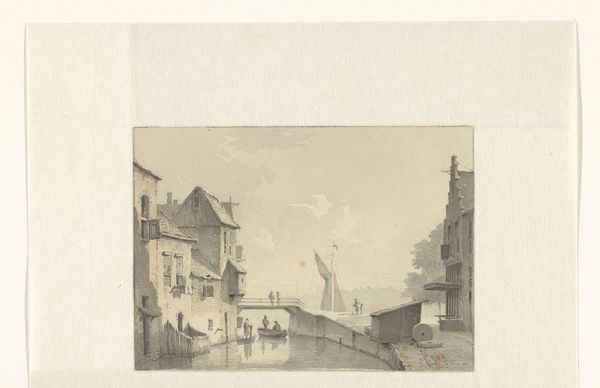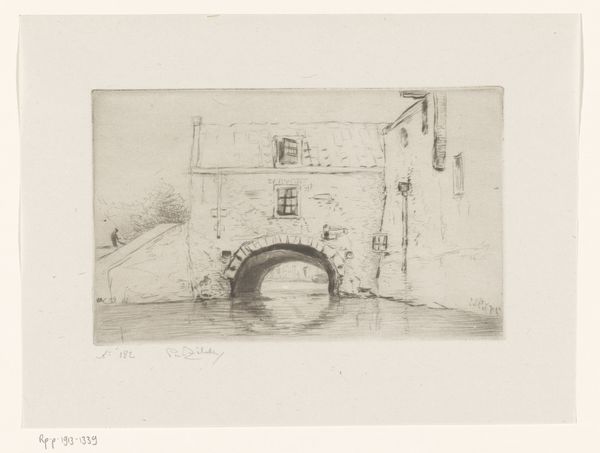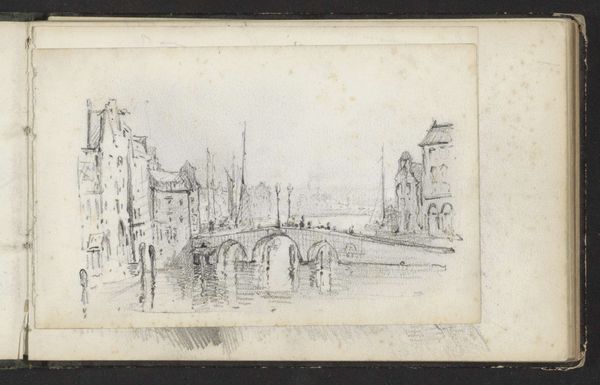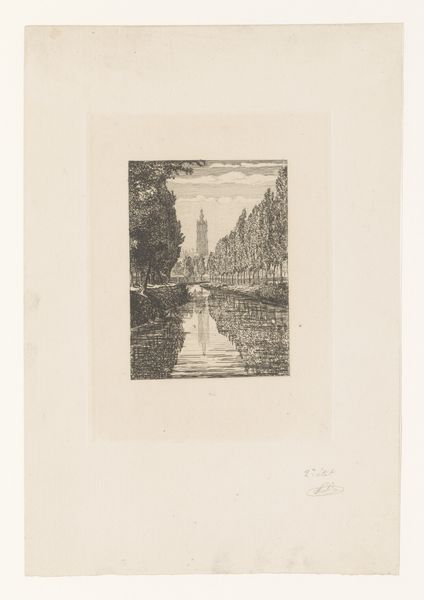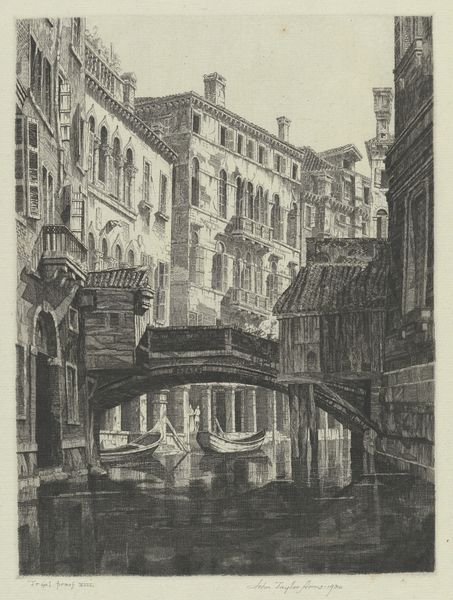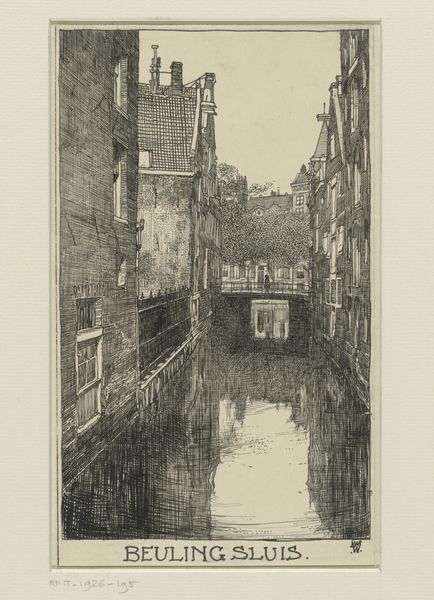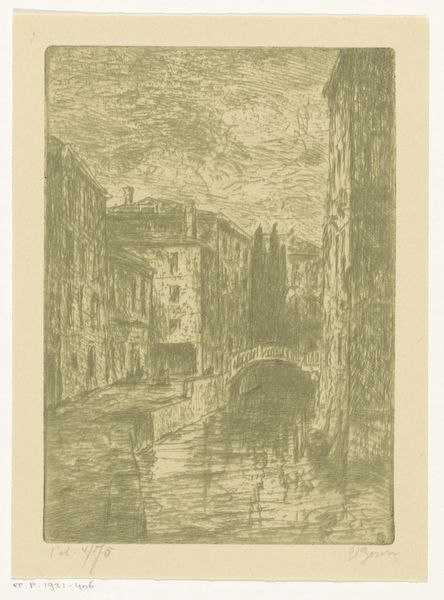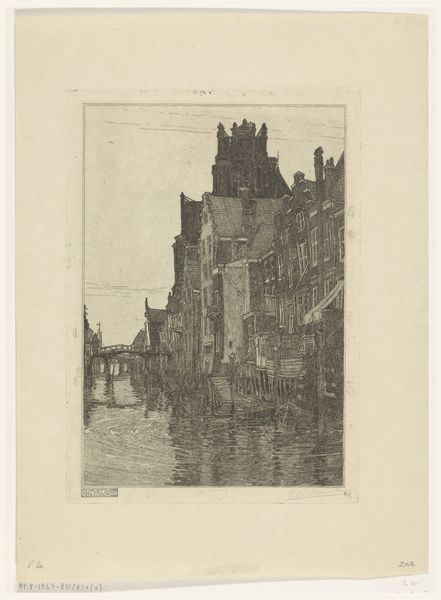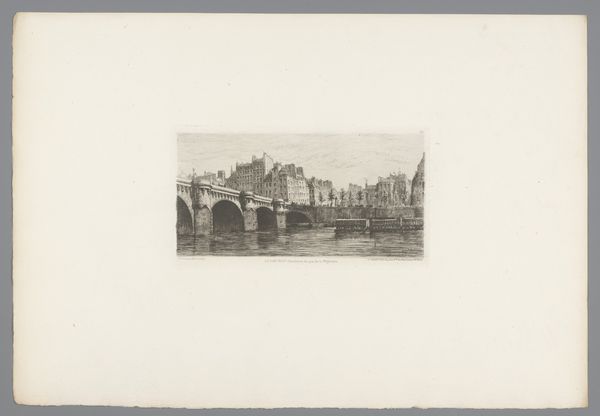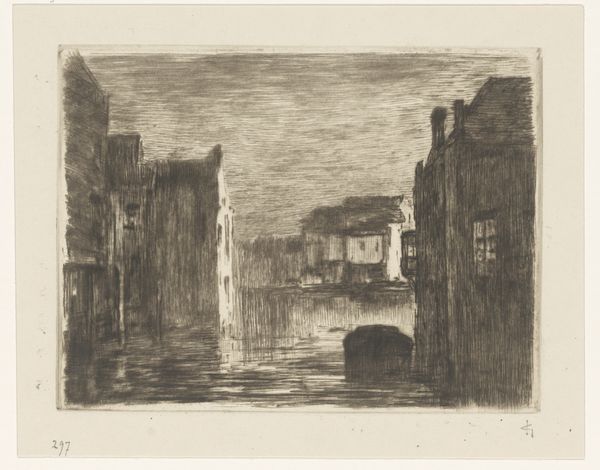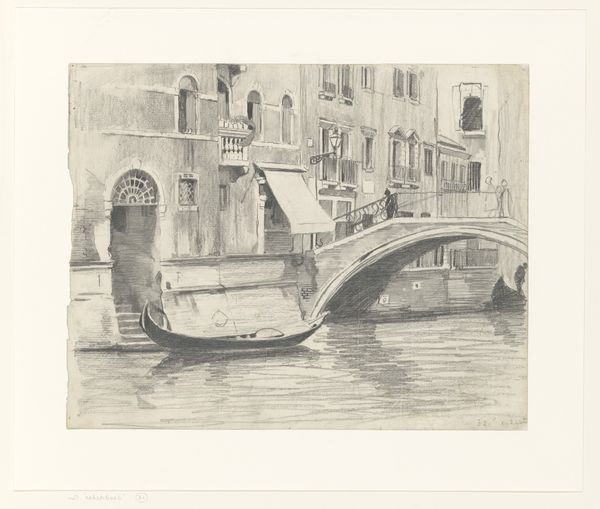
Dimensions: height 229 mm, width 162 mm
Copyright: Rijks Museum: Open Domain
Curator: Standing before us is Philip Zilcken’s "Grachtje in Venetië," created in 1920. It’s an etching, a print rendering of a Venetian canal scene. Editor: Oh, it's immediately dreamy! Sepia tones... almost faded into memory, like looking at Venice through gauze. What a delicate portrayal! Curator: Zilcken employs etching to offer quite a detailed look into the everyday life of Venice. Notice the labor-intensive process. The plate, the acid, the ink... Editor: All that effort for something so light and airy! There’s a bridge, a gondola just peeking underneath. What gets me is the window open up above, it sparks narrative, some hint of life within those buildings. It's not just scenery; it’s about connection. Curator: Absolutely. And considering Zilcken's background and the broader artistic movements of the time, we see this work as situated between realism and Venetian painting traditions, depicting both its beauty and its built structure. It prompts questions about who the image was for. Who could buy it? What ideas of Venice was he helping reproduce? Editor: Hmmm… I’m less interested in the buyers and more in how it makes me feel. It really pulls me in, doesn't it you? The slight imperfections of the etching, they feel incredibly human. Like a whisper of a place. You want to imagine you are sitting by that canal. Curator: Yes, but those imperfections are the product of a specific process! And how does that technique allow Zilcken to romanticize an ever changing landscape of the era? The city is both historical monument and lived-in urban space. It captures a sense of a place but in a manner available for purchase and collection. Editor: You’re so pragmatic! I see labor and production, yes, but transformed into sheer emotive beauty. Makes me wonder... can you truly separate intent from the artwork's eventual emotional life in its viewers? Curator: That interplay between production, material and emotive is the knotty centre. How these etchings become part of larger commercial pictures about Venice. Editor: Indeed. Well, whether you are analyzing its material components or swooning over its dreamlike charm, Zilcken’s little slice of Venice clearly offers more than meets the eye. Curator: Indeed, a worthy and intriguing piece within the collection!
Comments
No comments
Be the first to comment and join the conversation on the ultimate creative platform.
